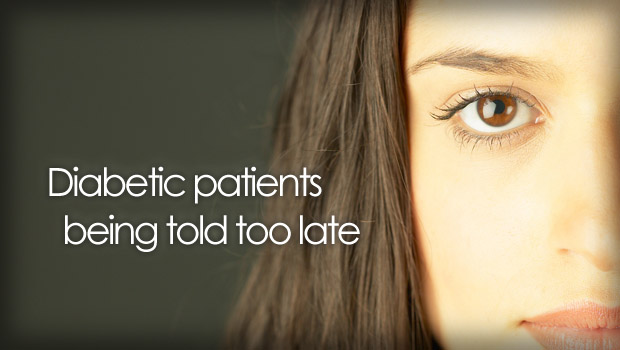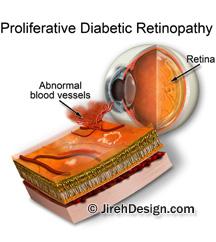Diabetic patients should be told about their eye problems earlier
A large percentage of diabetic patients are unaware that they have signs of diabetes and vascular changes on the back […]


Diabetic patients should be told about their eye problems earlier
A large percentage of diabetic patients are unaware that they have signs of diabetes and vascular changes on the back […]
A large percentage of diabetic patients are unaware that they have signs of diabetes and vascular changes on the back of their eyes.
In a study to determine diabetic eye care awareness, data from 798 diabetic patients was analyzed. It was found that only 44.7 percent of patients with diabetic macular edema were advised that they had signs of diabetes on their eyes. Diabetes is the #1 cause of legal blindness in U.S. working-aged individuals.
Almost 47 percent of the diabetic patients revealed that it had been over a year since last seeing a diabetic nurse, dietitian or nutritionist, some never seeing one at all.

The retina is the back, inner wall of the eyeball. It is the part of the visual process responsible for capturing light entering the eye and sending the light impulses through the optic nerve to the brain, where they are interpreted as an image.
Diabetic macular edema results from tiny changes in the retina’s blood vessels. These changes can be detected with a dilated eye exam. Your eye doctor will perform common tests like: visual acuity readings, Optical Coherence Tomography and Fluorescein Angiography. If a certain level of fluid is present on a retina, a retina specialist will commonly treat diabetic macular edema with: steroid drugs, either in eye drop form or injected into the eye; laser treatment; retinal (scatter) laser treatment or intraocular anti-VEGF medications.
Recently, retina specialists have employed a combination treatment strategy which has proven to be quite successful.






